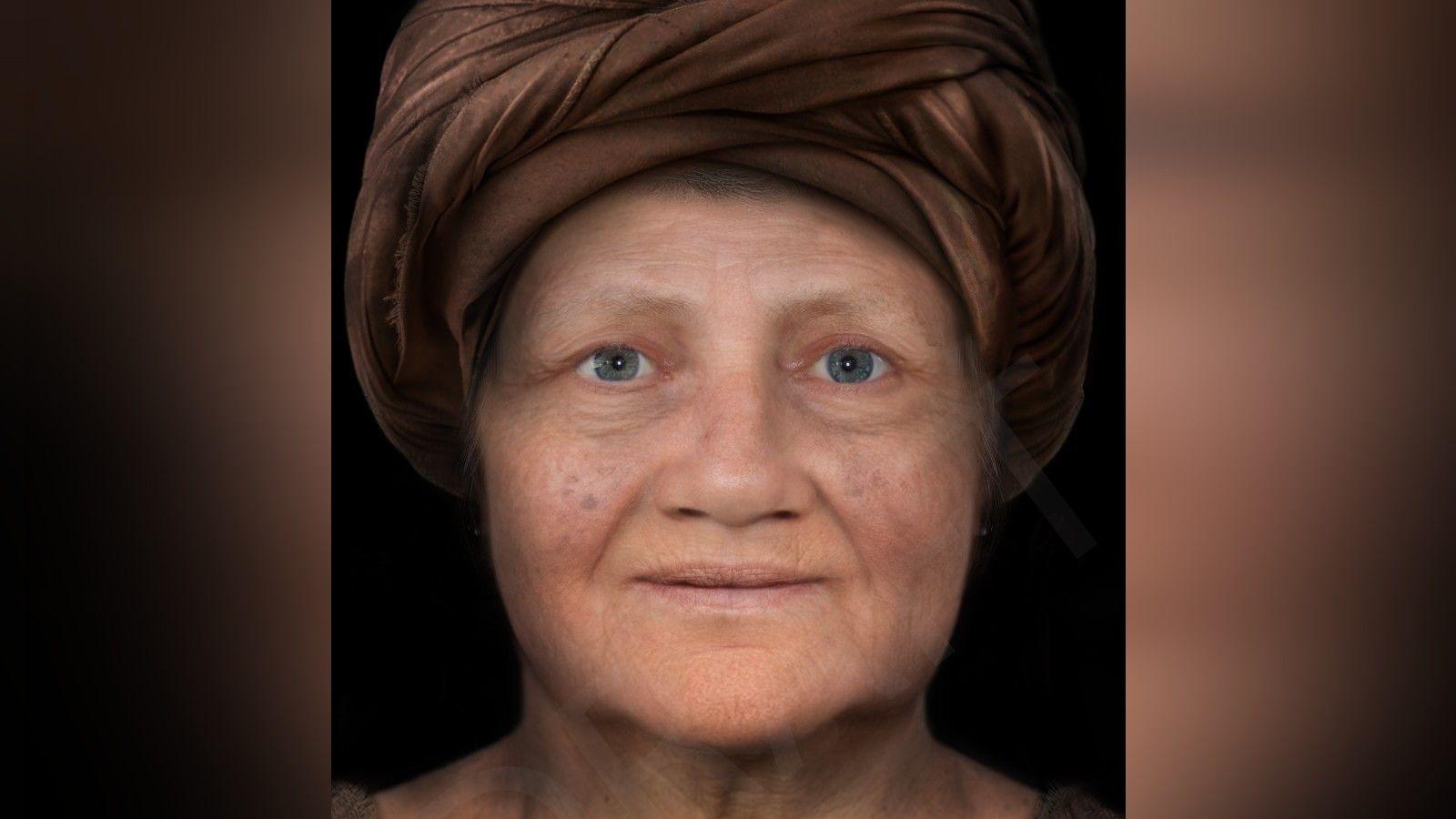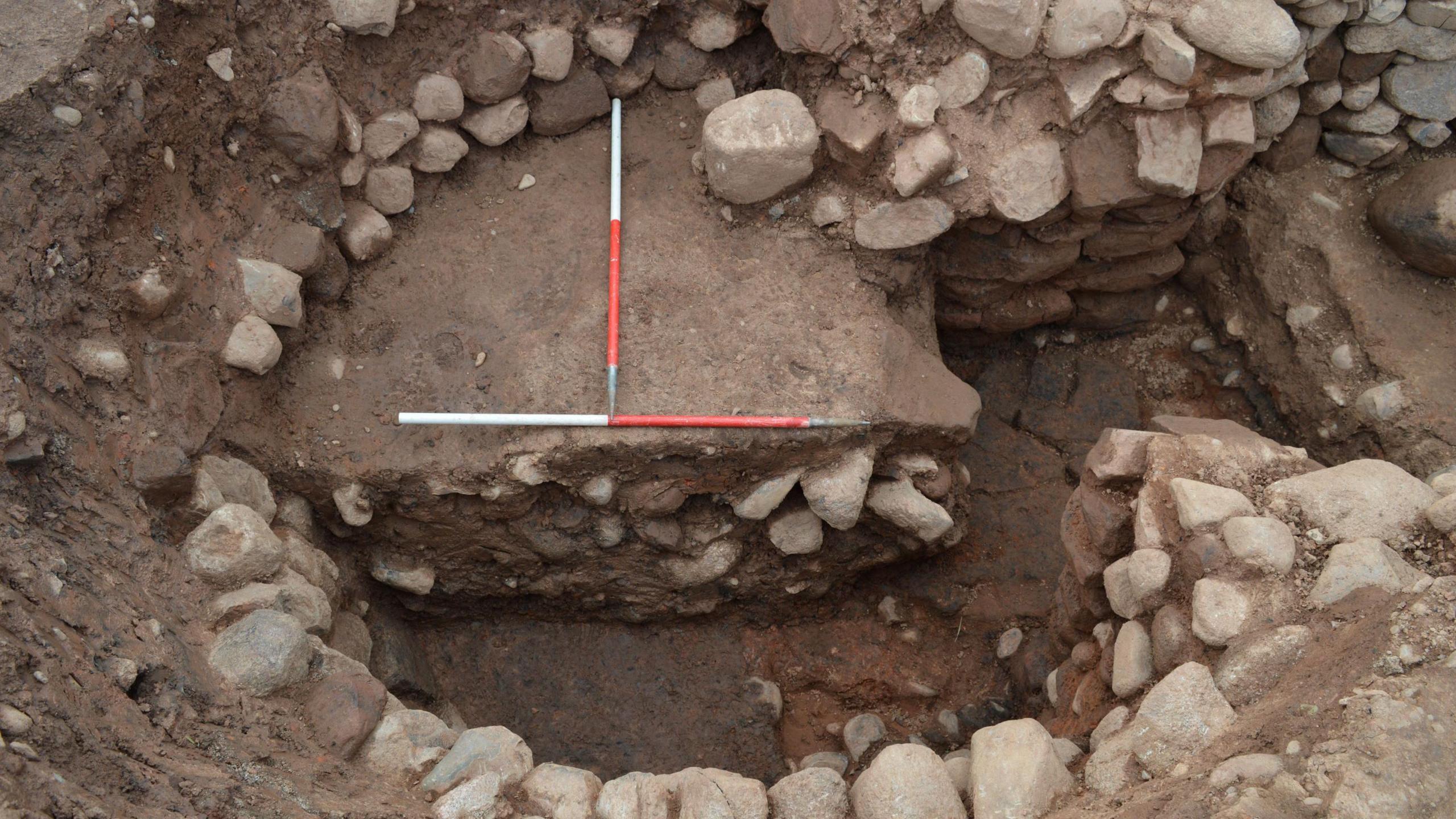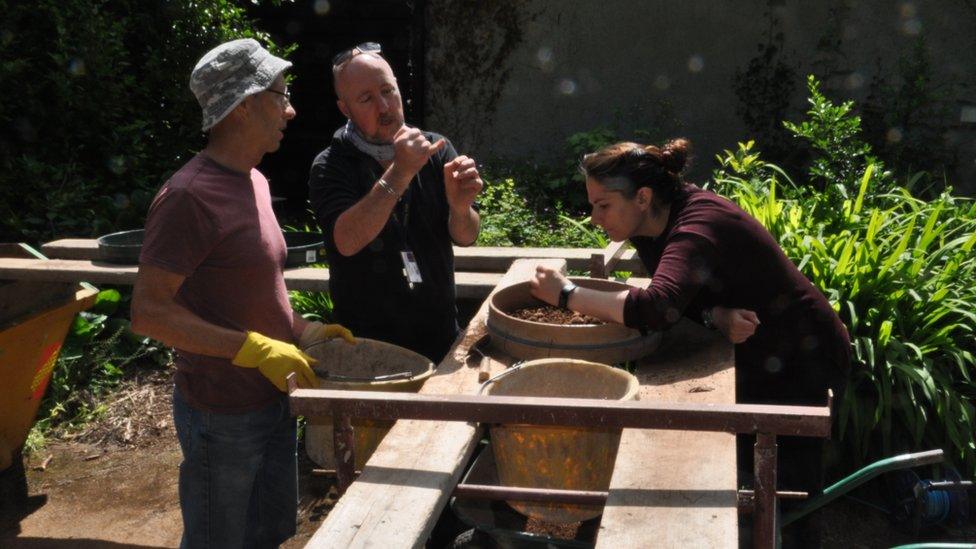Woman rebuilt from 900-year-old skull named Agnes

Scientists rebuilt the Kendal Woman's face using computer technology
- Published
A woman whose 900-year-old remains were unearthed during flood management work has been named.
Her skull was found buried at Holy Trinity Kendal Parish Church in Kendal, Cumbria, in 2022.
More than 300 people voted to name the woman Agnes, who was estimated to be in her 50s when she died in the mid-12th Century.
Environment Agency (EA) archaeologist Steve Dean said recreating the woman's appearance had "opened a window into the past" and helped residents connect with her history.
Agnes was officially named at an event on Tuesday at the church, close to where she was found.
Skeletons from 14 bodies were found buried there when the EA started work on a flood management scheme in 2022.
Although most of the skeletons were crushed because they had been beneath the churchyard wall for centuries, Agnes' skull was in good enough condition for the reconstruction.
She is estimated to have died in the 1200s and is believed to have lived in the town all of her life.
Mr Dean said the project by Liverpool John Moores University to recreate Agnes' appearance "had made people understand what she had gone through and given a connection to the community".
"It opens up a window into the past and it's really nice to see," he added.
'A hard life'
The archaeologist said he had heard from residents who had "spotted people who looked like Agnes" walking in Kendal and Staveley.
"There very may will be a bit of Agnes still walking around the local population," he added.
Mr Dean previously said Agnes' bones suggested she led "a hard life", with the reconstruction showing the "ruddy complexion of one who has worked outdoors extensively, probably in the fields which would have surrounded the town".
There were indications she had been buried without a coffin and her position in the church yard suggest she was not of high status.
Mr Dean said that was confirmed by teeth and bone analysis, which suggested she had a poor diet with little meat, fish and dairy products.
Follow BBC Cumbria on X, external, Facebook, external, Nextdoor and Instagram, external.
Get in touch
Do you have a story suggestion for BBC Cumbria?
Related topics
- Published15 September

- Published13 February

- Published25 January 2023
